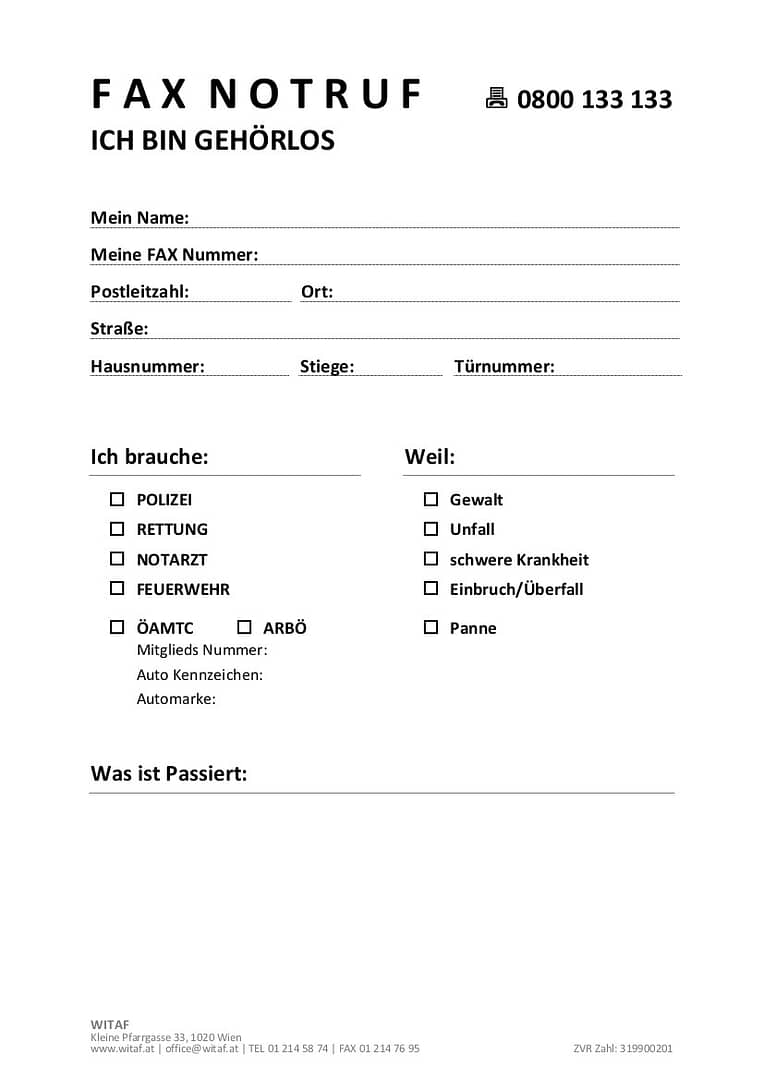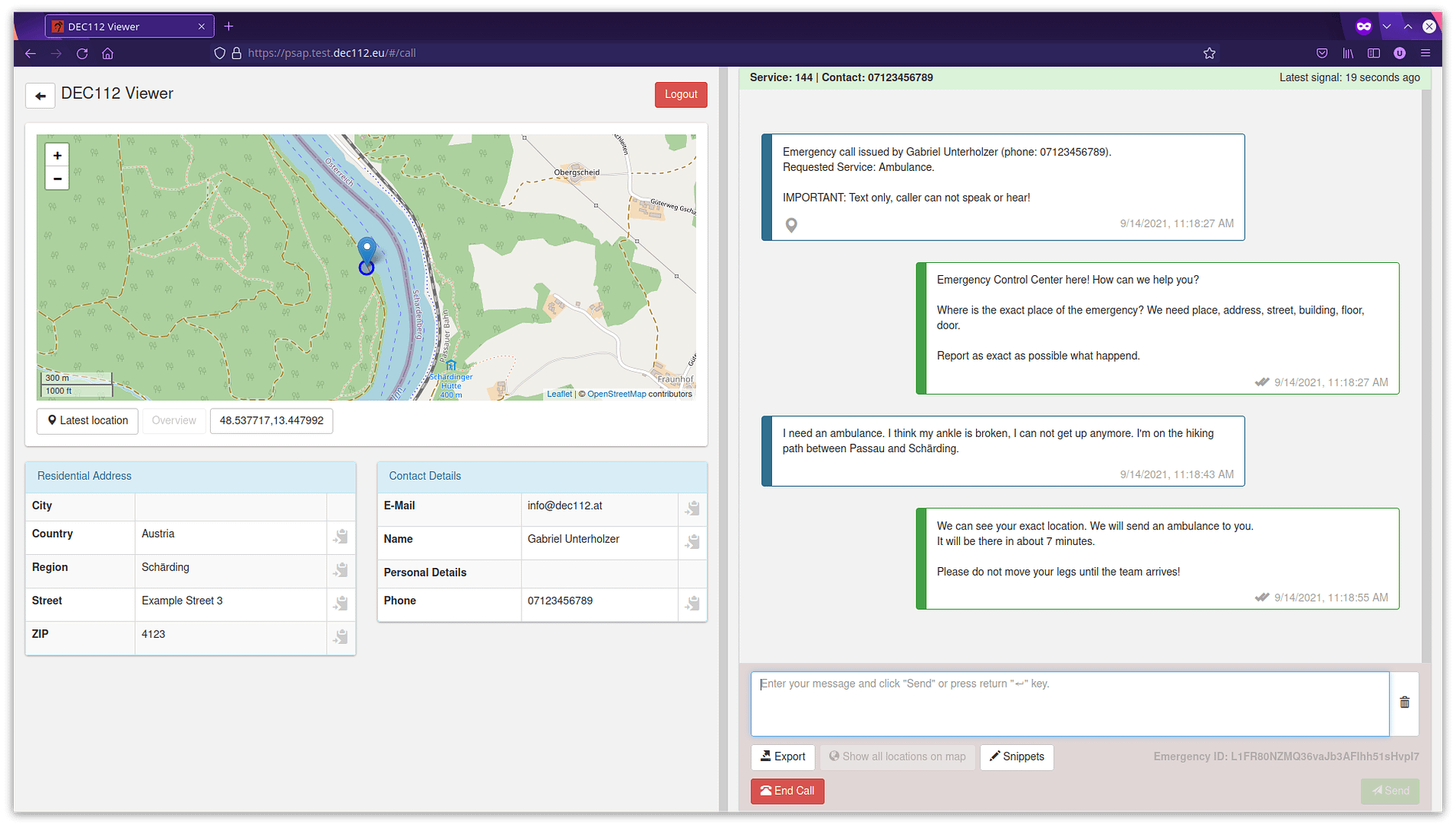NG112 with accessibility in mind
Imagine a sunny day in autumn, you are enjoying a wonderful hike and suddenly, you stumble, you fall and can not stand up anymore because your ankles hurt too much. What are your options?
1. Filling a pre-printed emergency form and sending it via fax? Not really.
2. Sending a text message to a 10-digit number with no possibility for the call taker to reply with further questions about your emergency?
By the way, you are deaf, and this procedure is still a reality in some European countries for a non-negligible number of people.

With fax and SMS not being adequate replacements for ordinary emergency calls, there is also the problem of both being legacy technologies that will slowly be phased out. But how to deal with text-based emergency calls in a world where 4G/5G are the new standards in mobile communication?
NG112 (Next Generation Emergency Calls) uses IP technology, allowing emergency calls to be transmitted via standard internet connections. This not only brings better quality and more advanced routing for standard emergency calls, but additionally enables transmission of audio, text, pictures and even allows video calls.
Now let’s re-imagine the previous example: You, unable to get up and in need of help are now able to set up a video call with the nearest emergency control centre. You don’t even need to mention you are deaf because you have already entered this information into your phone in the past. That’s why the call taker has already included a translator into the video call, who is able to provide translation between spoken and sign language.
This is an ideal situation most countries have not reached yet. However, there is momentum in NG112 and accessibility. In Austria, you can already communicate with emergency centres via text messages utilising an NG112 infrastructure. Due to the nature of NG112, making an emergency call will not connect you to one central call centre, but always to the most appropriate call centre in your area. Call routing is based on accurate location determined via the smartphone’s GPS or network-based location sources. In addition, important emergency information (like health records or medical data) is already sent to the call centre on call setup, which can then be forwarded to the rescue service for improving quality help.

After the call is setup, the caller and call taker can exchange text messages similar to common messaging or chat apps. Constant location updates accompany this to ensure the most accurate location for dispatching help. Future service enhancements will support media exchange (pictures, videos, documents) and video conferencing to allow better interaction or provide detailed information of the emergency situation to the call taker.
However, accessible emergency calls can be equally important for all groups in society. Physical violence within families, with most victims being women, is still a severe issue. Calling the police on the phone in situations of acute danger might even worsen a tense situation, possibly leading to an escalation, including physical abuse. Such circumstances coerce you to make an emergency call silently. Opening a simple app on your phone or even pressing a hidden switch in your smart home may be enough to indicate you are in acute danger, without the necessity to speak.

These are only some examples of how accessibility services can be implemented in an NG112 system. However, the real beauty of NG112 itself lies in its standardisation and openness. Thanks to publicly available standards documents, basically everyone is able to develop innovative services for the NG112 ecosystem. Several applications that want to enrich common emergency calls with text, video or other functionalities are already available. However, with most of them being built on proprietary technologies, they are incompatible with solutions from other vendors. Lack of compatibility forces users to choose among a variety of applications, depending on what is supported in their region, which is even more cumbersome for people who travel frequently. Similarly, the interconnection of different emergency control centres is difficult, if not impossible.
NG112, in contrast, provides technical definitions of how emergency applications “talk” and “interact” with each other. This way, all services integrated into an NG112 infrastructure can “understand” each other because they all “speak” the same “language.” It is very important to highlight that NG112 does not prevent innovative ideas from being realised within the ecosystem. All standards documents are quite open and allow a wide variety of other technologies to be integrated into NG112, meaning even very specialised or technologically advanced applications can exist within an infrastructure. However, due to defined “ground rules”, which apply for all participants within the network, it is ensured that emergency calls are always routed to the most appropriate and nearby call centre, no matter what features are built on top of the common NG112 base. Depending on the caller’s current location, an emergency centre may not necessarily support special features, like video calls or image exchange, but will always be able to handle an emergency call on a basic level (like voice or text-chat), which is a highly important feature for reliable emergency calls in a trans-European network.
That said, we are convinced that building on NG112 standards allows a more harmonised access to emergency services for both users and emergency call centres. What is more, users who are dependent on other means of communication than voice are granted the same possibilities for making emergency calls as hearing users, which is a crucial step towards social equality.
References:
· DEC112 Website: https://www.dec112.at
· Open Source NG112 components: https://github.com/dec112
· NG112 core elements specification: https://www.etsi.org/deliver/etsi_ts/103400_103499/103479/01.01.01_60/ ts_103479v010101p.pdf
· Text-based NG112 emergency calls specification: https://www.etsi.org/deliver/etsi_ts/103600_103699/103698/01.01.01_60/ ts_103698v010101p.pdf
The opinions expressed are those of the author and do not necessarily represent the views of EENA. Articles do not represent an endorsement by EENA of any organisation.
Share this blog post on:

